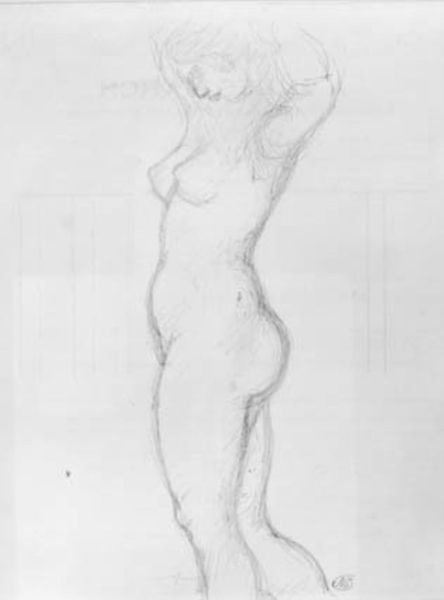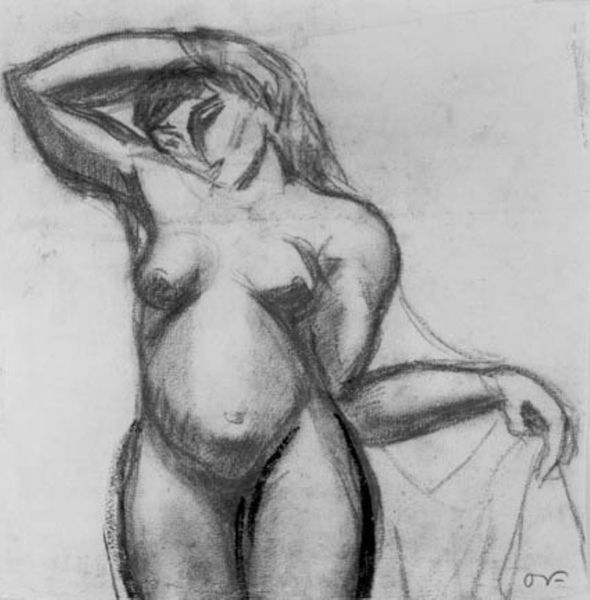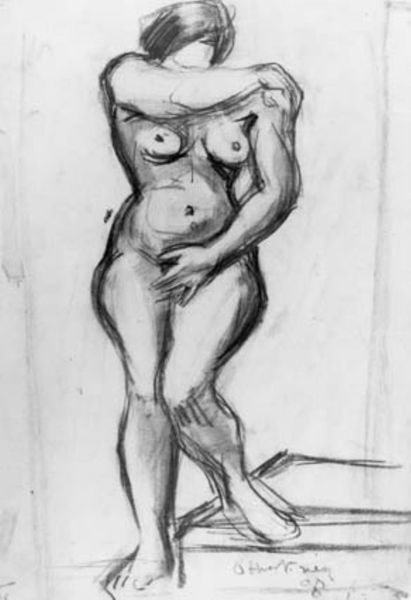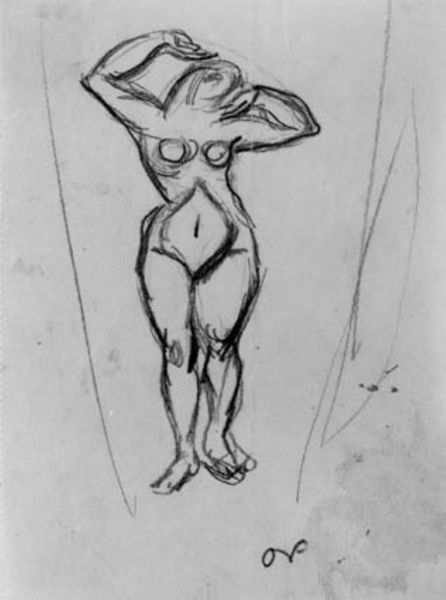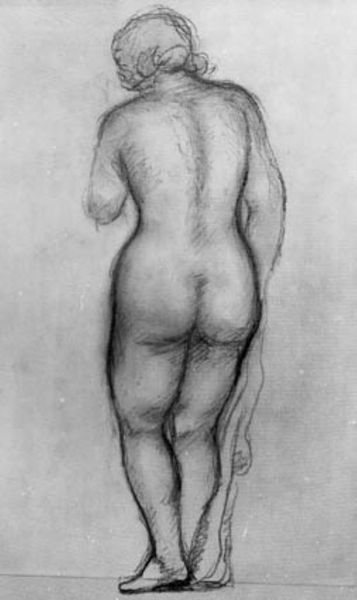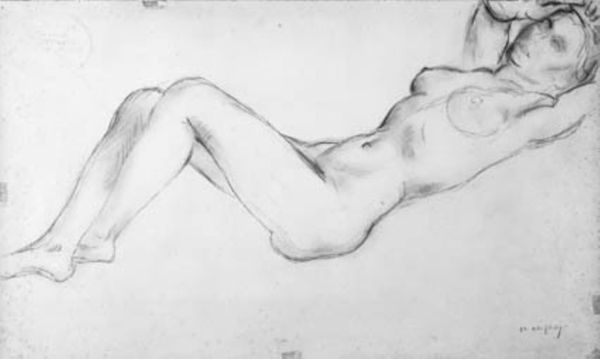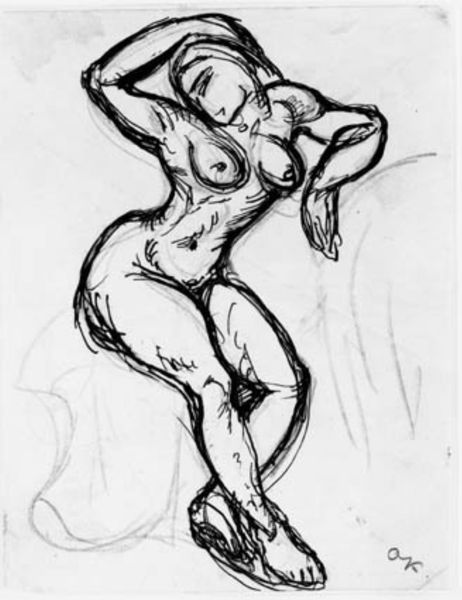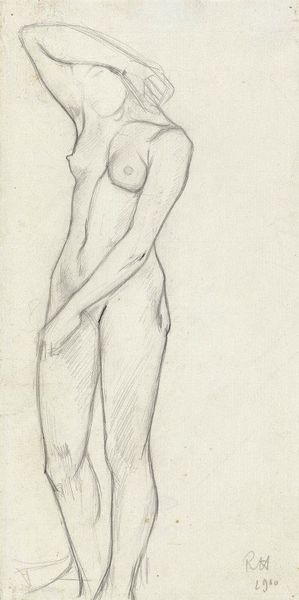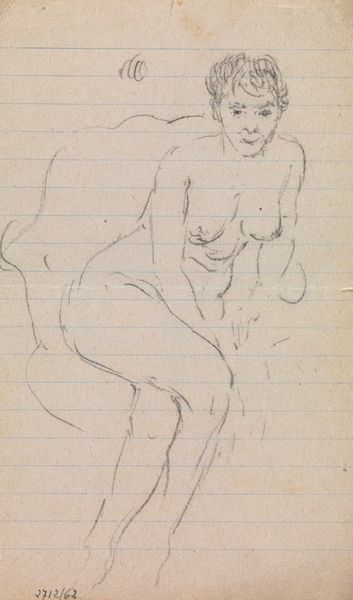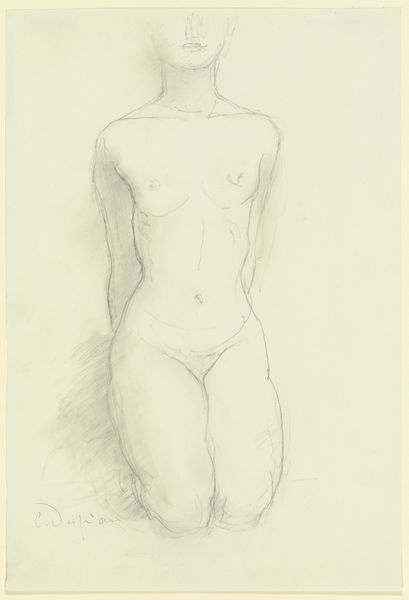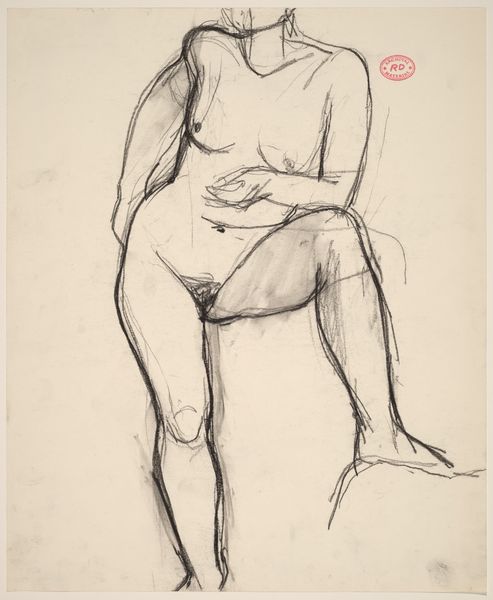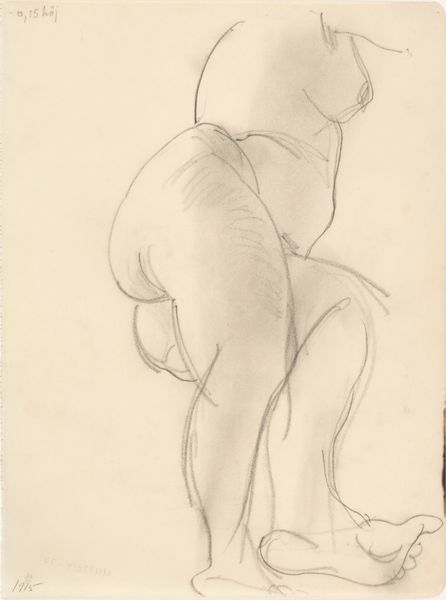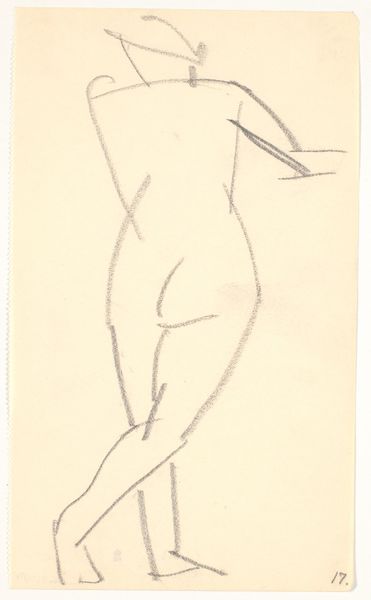
drawing
#
portrait
#
drawing
#
figuration
#
expressionism
Dimensions: 176 mm (height) x 116 mm (width) (bladmaal)
Curator: Up next is *Standing White Clown*, a sketch done by Othon Friesz, most likely executed between 1908 and 1909. Editor: There's something melancholy about this clown, wouldn't you say? It's as if the joy has been drained from the traditional jester. The pose itself speaks volumes: the downward gaze, the slightly slumped shoulders... Curator: Absolutely. The clown is a potent figure, representing merriment but also harboring deep psychological complexities. The starkness of the charcoal or pencil only intensifies the feeling. Notice the economy of line, yet he suggests a roundness of form with those bold strokes. It reminds one of Expressionism; do you agree? Editor: Expressionism feels right, yet it departs in a crucial way; the drawing here serves form first and emotion second. Look at how he delineates the cap or trousers – each line is confident and seems only present to suggest the shape rather than emotion; he reduces it down to its formal essence. Curator: Yes, and in doing so, it seems he enhances the cultural weight we place upon such characters. Clowns, throughout history, carry the role of the "fool", an individual set apart from societal norms, permitted to speak truth in satire. It gives them a complex power that persists over centuries, now rendered as pure form. Editor: A good point; even reduced to shape and line, one cannot dismiss its thematic import; It is rather well done with just line, light, and shade to make the overall composition quite harmonious as we examine the various shapes and shading involved within its forms. Curator: It makes you wonder about Friesz's intentions. Was he critiquing the figure of the clown itself, or using it as a stand-in for the human condition, stripping away artifice to reveal something more essential and tragic? Editor: Regardless, what initially read to me as simply melancholic I can now see is made that way by Friesz's very careful rendering technique; I suspect such reduction enables the emotionality. Thank you. Curator: An excellent observation. It shows how studying art leads us to question our pre-conceived notions about symbols and their deeper meaning. Thank you, as well.
Comments
No comments
Be the first to comment and join the conversation on the ultimate creative platform.
